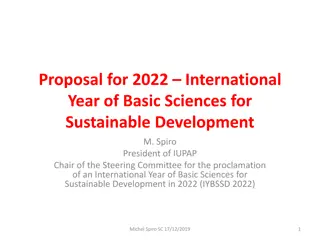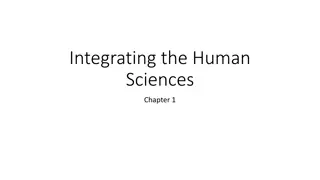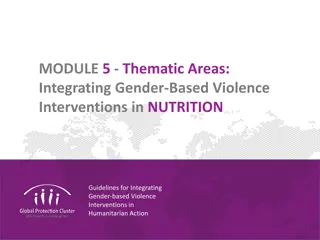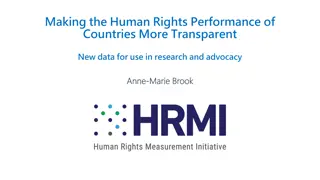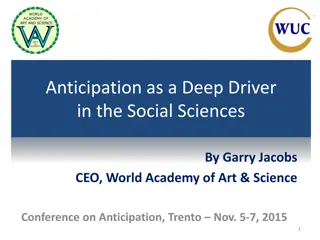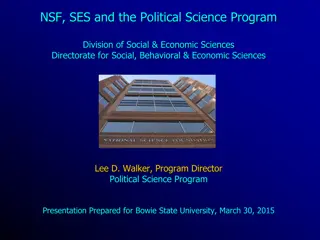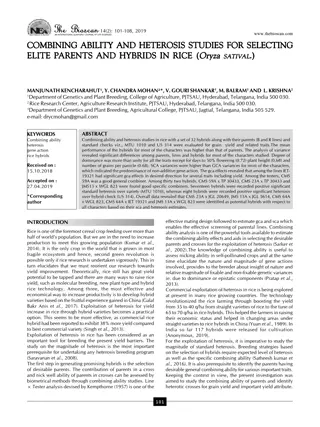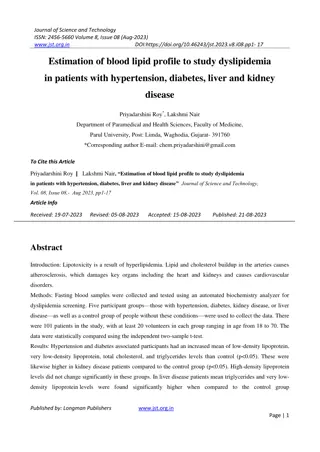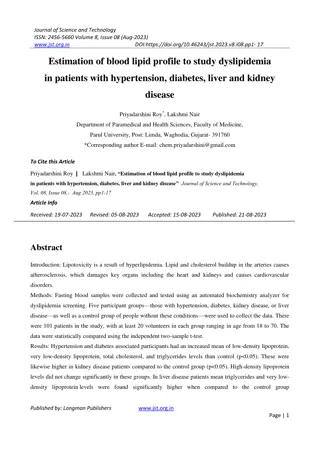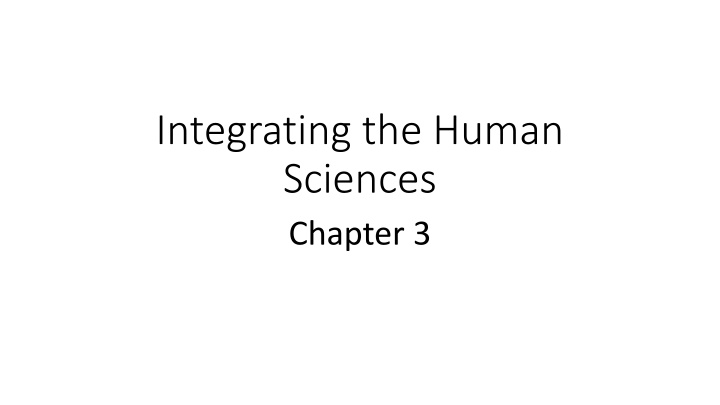
Insights on Integrating Human Sciences: Motivation, Lessons, Causation, Judgment & Reflection
Explore valuable insights on integrating the human sciences, including the significance of engaging with related works, lessons on the value of integration, discussions on causation, and the importance of judgment and reflection in scholarly research. Discover how integrative research can enhance the understanding and application of knowledge in the humanities and social sciences.
Download Presentation

Please find below an Image/Link to download the presentation.
The content on the website is provided AS IS for your information and personal use only. It may not be sold, licensed, or shared on other websites without obtaining consent from the author. If you encounter any issues during the download, it is possible that the publisher has removed the file from their server.
You are allowed to download the files provided on this website for personal or commercial use, subject to the condition that they are used lawfully. All files are the property of their respective owners.
The content on the website is provided AS IS for your information and personal use only. It may not be sold, licensed, or shared on other websites without obtaining consent from the author.
E N D
Presentation Transcript
Integrating the Human Sciences Chapter 3
Motivation It is valuable to engage other works concerned with the state of the humanities and social sciences. These often agree with us, and thus provide justification for our arguments. They occasionally guide us to clarify those arguments. Most importantly, perhaps, they often raise concerns that we can provide answers to. This serves to establish the value of our approach. (We focus on the second and third of these purposes in the chapter.)
Lessons about the Value of Integration Frequent efforts at integrative research are the best means of combining individual pieces of specialized research into a coherent whole, and not forgetting and then re-inventing the wheel. Integrative research also could take account of stylized facts that have not yet been theorized. Integrative research compensates for the lack of replication in human science. Integrative work can suggest new research questions. We can only fully appreciate any one causal link in the context of related links. Integrative work can synthesize diverse perspectives. Integrative works can identify situations in which misguided or simplistic assumptions drive results. Integration can combat confirmation bias, especially if negative results are published somewhere. Integration can allow us to identify effects that are found to be statistically insignificant in many studies.
Causation Scholars who are suspicious of causation nevertheless employ causal analysis. We can apply causal analysis to all of our phenomena. Though a formal definition is elusive, we can understand causation as when a particular realization of one phenomenon increases the likelihood of a particular realization of another phenomenon. We can seek multiple kinds of evidence for causation. We should look for the effect to be found in diverse studies. We should seek evidence for some mechanism that explains the effect. We should seek evidence that the cause precedes the effect. In some cases, it is valuable to find that removal of the cause decreases the likelihood of the effect. We should compile evidence against alternative explanations.
Judgment and Reflection Scholars need to exercise judgment, because our data do not perfectly reflect our phenomena. Judgment is also called for when we adjust our hypothesis after examining our data: This may be a form of research trickery but may be essential in identifying contextualized generalizations. We should thus be reflective. We encouraged individual researchers to engage in several types of reflection. We also appreciated that integrative researchers are forced to reflect on why different researchers reached different conclusions.
Some History of Ideas Integration, and the search for contextualized generalizations, should act together to reduce the faddishness of some fields in human science. We should retain insights from discontinued research programs. The historical recognition that systems analysis fell out of favor in some fields from the 1970s is best understood and addressed by a recognition that systems are open.
Methods; Productivity We can have greatest confidence in a hypothesis justified by different methods. When different methods point in somewhat different directions, we can triangulate to the most likely explanation. Integration can serve to evaluate how productive a field is, and suggest changes.
Humanities We can best understand the humanities (excluding philosophy) as studying a set of causal links involving art and cultural expressions. Comparative research, a kind of integration, is the best way of distinguishing the aesthetic from cultural influences on and effects of art. Although humanists study works of art that embrace complexity, humanists in their research should avoid the temptation to address myriad causal links far from art or cultural expressions. We should not assume that artists understand economic or social theory. There is no conflict between the goals of interpretation and understanding. We can integrate across interpretations in the pursuit of understanding. An integrative understanding of why art moves us might encourage students to enjoy art more rather than less. Integration naturally combats a sense that the humanities are no longer coherent.







